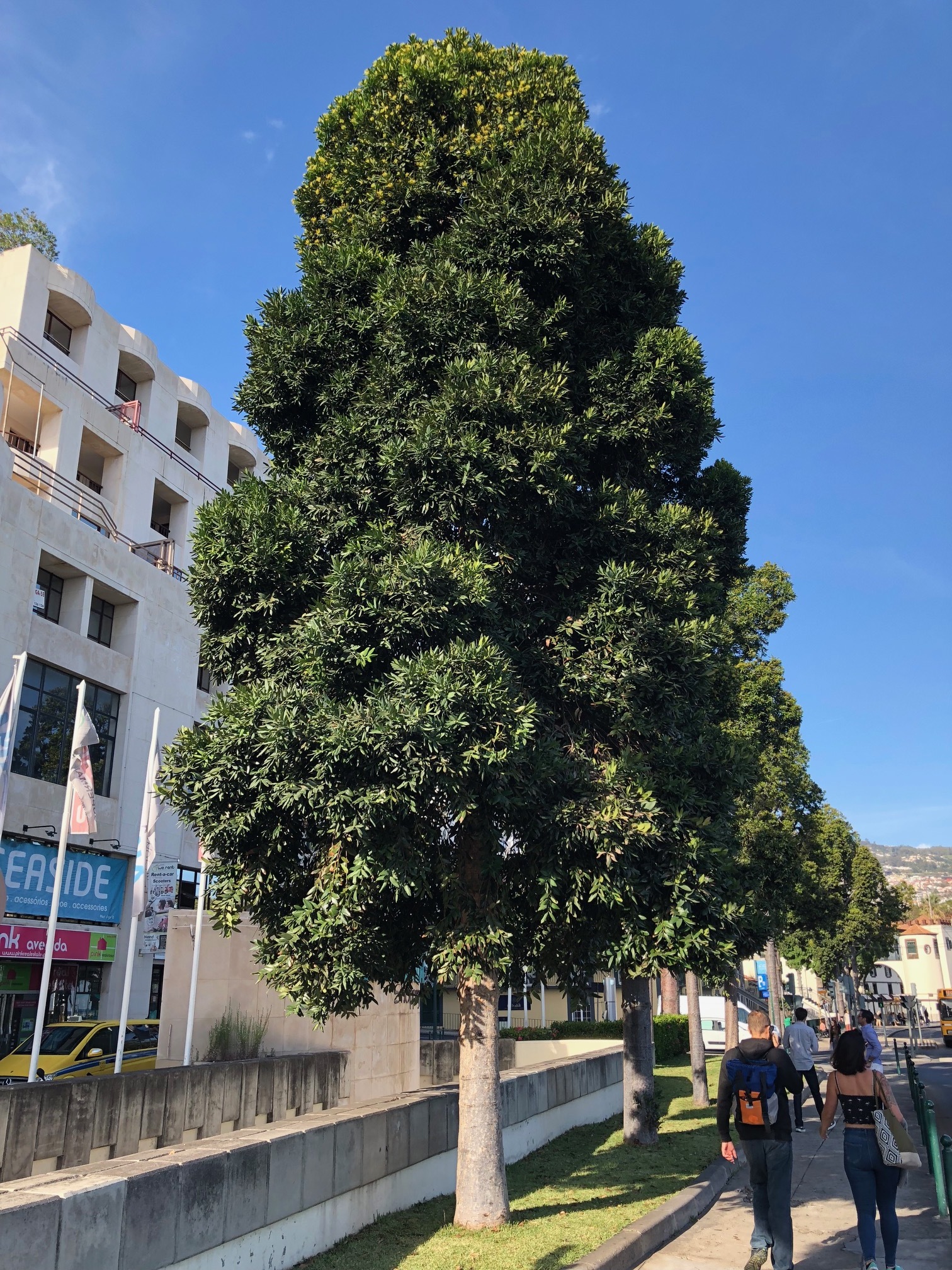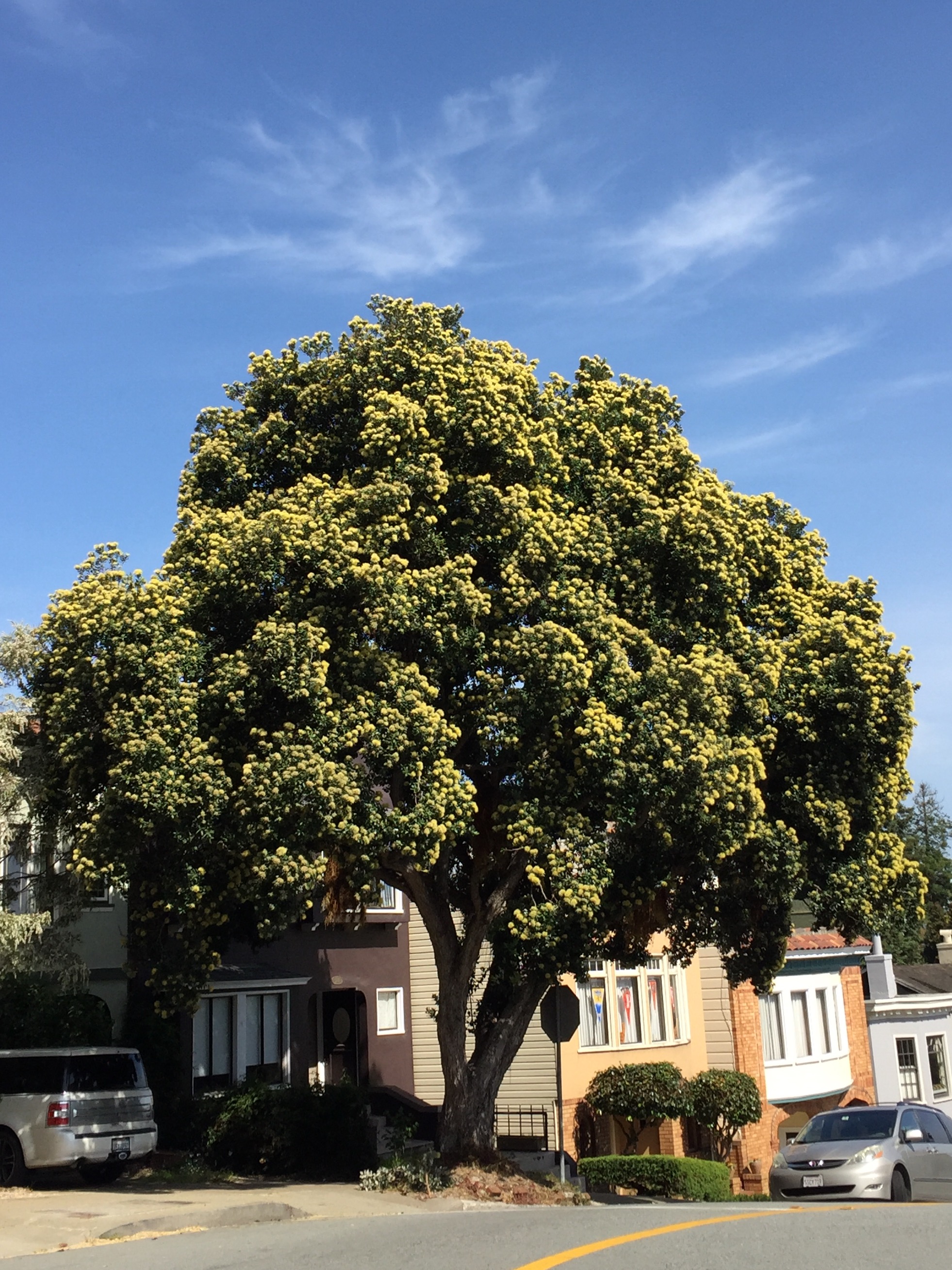Yellow New Zealand Christmas Tree in full bloom
I’m often asked about my favorite tree. Not the type of tree I love most, but my favorite individual tree in the entire city. This tree, at 1221 Stanyan Street in Cole Valley, is my personal number one.
For starters, the tree is one of the city’s best specimens of New Zealand Christmas tree (Metrosideros excelsa), popular for its showy red bottlebrush flowers. And, indeed, all of the many hundreds of New Zealand Christmas trees on San Francisco’s streets have red flowers, except for one—at 1221 Stanyan Street. Every June, that tree pops with spectacular yellow flowers. And it’s at its peak right now, as I write this post on June 23 (almost six months from Christmas in New Zealand).
How did this tree end up with yellow flowers? The story goes back to Victor Reiter, San Francisco’s most famous plantsman from the 1930s until his death in 1986. (See p. 73 in my Trees of San Francisco book for more on Reiter.) In 1940, there was a natural mutation of the species on tiny Motiti Island in the Bay of Plenty in New Zealand, and in the late 1950s, Reiter was one of the first Californians to obtain a cutting (for the details on exactly how that happened, see the bottom of this article). As the Reiter family lived in several homes in a three-block stretch of Stanyan Street, they planted the curiosity in front of their 1221 Stanyan address—still occupied today by a family member. And more than 70 years later, the tree is thriving. It’s a beautiful mutant with an amazing history and pedigree—and my favorite tree in San Francisco.
[The paragraphs above are mostly copied from my book, so a few years old - but here’s a June 2019 postscript: I have a cousin who lives on the west side of Stanyan Street, and her back yard fronts onto the Reiter family garden. She took me into her back porch recently, and I saw another yellow specimen, even larger than the one at 1221 Stanyan, in the garden. There are other specimens of this variety of the tree (the scientific name of the yellow-blooming variety is Metrosideros excelsa ‘Aurea’) in off-street locations - there are a couple in the San Francisco Botanical Garden, at the entrance on the left; there are a couple near the entrance to Fort Mason - they alternate with red-blooming species, which is a cool effect, and I was recently informed that there are a few in Golden Gate Park near the horse stables. It would be nice if the nursery trade had more of them!]
[From an article written by Elizabeth McClintock in the July 1968 issue of California Horticultural Journal: “ A yellow flowered form of Metrosideros excelsa has occurred in the wild of New Zealand on Motiti Island, a small island a few miles from Tauranga in the Bay of Plenty, on the northeastern coast of North Island. This form is cultivated in New Zealand (Duncan and Davies, 1965) under the name M. excelsa ‘Aurea’. It was introduced to cultivation in San Franciso by L. M. Tivol. About ten years ago a visitor to the San Francisco Business Men’s Garden Club told Mr. Tivol of seeing such a plant in the wild in New Zealand while he was on a fishing trip. Mr. Tivol expressed an interest in having the plant, and when the visitor returned to New Zealand he sent cuttings to Mr. Tivol. The cuttings were turned over to Victor Reiter who succeeded in rooting several. In 1961 Mr. Reiter exhibited a flowering specimen from his young tree at the California Horticultural Society. Mr. Reiter presented one of his trees to the Strybing Arboretum in 1964. At the present time (December 1968) this tree is about eight fee tall and in the summer of 1968 it flowered profusely.”

































